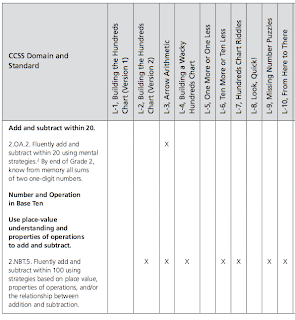I've been waiting weeks for the It Makes Sense! series I ordered to be delivered to my parents' house in Georgia. The plan was to give it a good once over and see how the lessons and games could be fit into my year. So, imagine my disappointment when I boarded the plane back to Nevada with no books. (cue melodramatic crying airport scene)
 |
| Every time the mailman drove past our house.. |
Anyway, I just finished giving It Makes Sense! Using the Hundreds Chart to Build Number Sense a good once over and I LOVE IT! The format is very user friendly and the lessons are really great.
The book starts with a How to Use This Resource section. This beginning of this section basically lets the reader know what a hundreds chart is and how it can be used as a manipulative in the classroom. The second part of the section breaks down how the lessons are presented in the book. Each of the lessons tells you which other lessons are related to it and suggests when the related lessons should be taught. They also give you an overview of the lesson and its goals, suggestions for timing, a materials list, and questions to probe your students. My favorite feature in the lessons are the teaching insights. They're these little blurbs that give you more information about the math content in the lesson, tips for teaching the lessons and using technology, what students might be thinking, and differentiating (among other things). There's also a great CCSS aligned guide to show which lessons match which of the K-2 standards.
All of the lessons and activities in the book seemed pretty great. My favorites were Building the Hundreds Chart and Ten More, Ten Less. I really like how engaging they seem and that they can be repeated over and over. Both of these lessons include a lot of opportunities for student discourse and the use of sentence frames. I think that's perfect for the beginning of the year when the kids are still shy and uncertain about communicating mathematically.
I was also very interested in From Here to There: Solving Comparison Problems. My kids had a lot of difficulty with the comparison problem type last year. It was a real struggle. Well, this book has a lesson on using the hundreds chart to solve those problems AND a game to help kids conceptually understand "difference" (no, it's not just the answer to a subtraction problem). I'll definitely be incorporating those this year.
The authors also included reproducible game directions. This is super convenient because I'm planning on using games/activities as homework this year. I like that the games here don't require a ton of materials because I'm departmentalized. I only wish that the directions were also in Spanish. But, I'm sure I can get them translated without too much of a hassle.
Overall, I give this book a 5/5. The content is great and it's user friendly. Have any of you used this book? If so, what did you think? Also, do you use a hundreds chart in your instruction? If so, how? If not, is it something you're interested in?




Look at you go, Miss H!!! You're just blazing down the blog trail with these book reviews and all that good info in your previous post.
ReplyDeleteWhile you catch your breath, wheel your wagon over to my train and read about my activity today.
Jill
a-little-red-wagon.blogspot.com